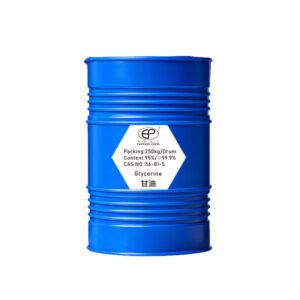I. Introduction
While Diethylene glycol, colloquially termed DEG, may not resonate as a quotidian term in one’s lexicon, its ubiquitous infiltration in sundry quotidian items mandates circumspection. Derived from ethylene oxide, this colorless, practically odorless, and sweet-tasting liquid plays a pivotal role in various industries. Yet, how did this ostensibly innocuous molecule ascend to such eminent stature? And at what cost?
II. Comprehending the Health Perils of Diethylene Glycol.
A. Chemical Properties and Toxicity Composition and Structure: Diethylene glycol, an ethylene oxide derivative, possesses two hydroxyl groups. Its deceptive sweetness has often been its bane, leading to accidental ingestions. Mechanisms of Toxicity: When ingested, DEG metabolizes into hydroxyethoxyacetic acid, which in excess can lead to metabolic acidosis and renal damage.
B. The Devastating Effects on Human Health Ever felt a tickle in your throat and reached out for that soothing cough syrup? Imagine the horror if that very relief turns out to be a silent killer. Short-term Health Risks and Symptoms: Initial symptoms might include nausea, vomiting, and abdominal pain but can swiftly escalate to neurological issues and renal failure. Chronic Health Complications: Extended exposure or ingestion can lead to irreversible kidney damage, neurologic dysfunction, and in severe cases, death.
III. Principal Origins and Applications of Diethylene Glycol.
A. Industrial Applications Role of DEG in Antifreeze and Coolant: DEG has become an antifreeze staple due to its ability to lower freezing points. Applications in Manufacturing: From creating pliable plastics to solvents that help paint adhere better, DEG’s versatility is undeniable.
B. Medical and Pharmaceutical Links Ever wondered about the sweet taste of certain medications? DEG in Cough Syrups and Medications: Alarmingly, DEG has been found as a cheaper alternative to non-toxic ingredients in some substandard medicines. Controversy Surrounding Toothpaste: Numerous instances underscore its unauthorized incorporation in dental creams, transforming dawn rituals into prospective health menaces.
IV. Notorious Episodes
A. The Mass Radiator Poisoning in Nigeria (1990) was A tragedy of epic proportions when antifreeze was mistaken for pharmaceutical glycerin, leading to countless deaths. Background: Lack of proper labeling and oversight meant a deadly substance became medication. Repercussions: The episode instigated stringent directions and verifications to forestall subsequent repetitions.
B. Other Tragic Episodes From Panama to Bangladesh, DEG-related incidents have caused numerous fatalities, prompting global concern.
V. Oversight Protocols and Directives
A. International Standards and Organizations’ Involvement Role of WHO, FDA, etc.: Constant vigilance, with the creation of guidelines to limit DEG content in products. Safe Use and Handling: Ensuring proper labeling, secure storage, and dissemination of critical information.
B. Controlling DEG Contamination From rigorous testing to promoting safer alternatives, global bodies work tirelessly to mitigate DEG risks.
VI. Public Awareness and Education Initiatives Equipped with knowledge, consumers can make safer choices and demand transparency.
VII. Juridical and Moral Deliberations: Beyond health perils, DEG’s infiltration in inferior merchandise elicits deep-seated ethical quandaries.
VIII. Diethylene Glycol Alternatives and Risk Reduction Innovation are critical. As commerce entities discern DEG’s latent perils, the pursuit for benign substitutes amplifies.
IX. The Mandate of International Health Institutions and Campaign Collectives: From fostering enlightenment to propelling transformations, global entities persist as vanguards in the battle against DEG’s clandestine menace.
X. Summary Diethylene glycol, though ubiquitous, remains a silent threat. Attentiveness, cognizance, and unwavering allegiance to safeguarding can preserve innumerable existences.
XI. FAQs
Q1.What is Diethylene Glycol?
A1.A toxic compound is used in various products, including some medications.
Q2.Is it safe for consumption?
A2.No, ingestion can lead to serious health complications.
Q3.How can I ensure a product doesn’t contain DEG?
A3.Always check labels and buy from reputable sources.
Q4.Are there alternatives to DEG in industrial applications?
A4.Yes, research is ongoing, and several safer options are in use.
Q5.How can one identify DEG poisoning?
A5.Symptoms can range from gastrointestinal distress to neurological issues. Prompt medical intervention remains paramount.








